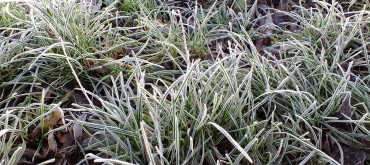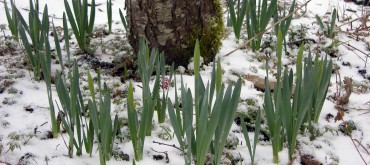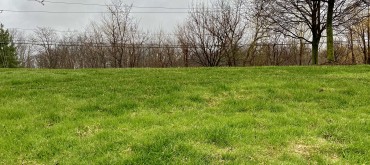As everyone’s lawn begins to green up this Spring some may be noticing patches of dormant grass that may appear to be dead from the winter wondering what has happened. What you may be seeing is simply a patch of Native Creeping Bentgrass that simply hasn’t started to grow yet due to its need for slightly warmer soil temperatures than the rest of your Bluegrass lawn. Unfortunately this form of grass is considered a weed by all accounts and is not something anyone plants intentionally in their lawn as it is a native plant. It has a couple strong survival mechanisms that are most visible in the spring and late summer as the plant remains dormant for protection. During the rest of the year it appears as soft, green patches that grow much flatter than the rest of the surrounding lawn. This is a grass that grows actively from early summer to mid fall when the cool moist weather is favorable to its survival.
Unfortunately this grassy weed is not like other weeds where it can be selectively controlled. Since it is in many ways the same as the other perennial grasses in your lawn, the best defense is to follow a couple key maintenance tips that favor your Bluegrass lawn over any Bentgrass that may be present. First, water deeply and infrequently to encourage your Bluegrass roots to reach deeper for their water. In turn, it will increase your lawn’s defense against Bentgrass and many other common weeds at the same time. When watering too often it provides constant moisture to the soil creating a more favourable environment for weed germination. Secondly, keeping your mowing height 2.5-3” long to provide shade to the soil. This will prevent the sun from reaching the soil surface and creating a more favourable area for weed germination. Mowing shorter than 2.5” will favor bentgrass growth, which we do not want to encourage.
Many who find themselves dealing with patches of this grass try and rake it out and apply new seed and soil as a remedy. However, if any of the existing bentgrass roots remain after raking, there is a high likelihood of the problem returning. If renovating is your plan, please ensure that you remove all of the existing bentgrass plant before attempting to start over. With proper care and time it is possible to keep this problem grass at bay, and allow your existing lawn to out compete it.





